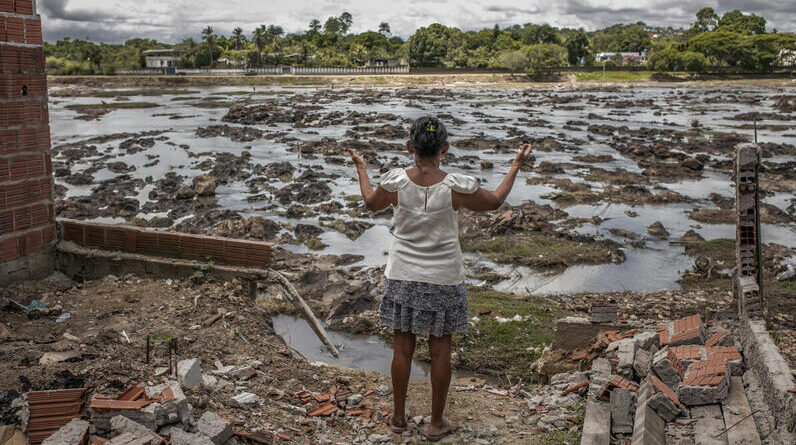Under governments’ current climate plans, the world will pump out enough greenhous gas in the next ten years to take global warming above 1.5C above pre-industrial levels, a United Nations report shows.
To have a 50:50 chance of limiting global warming to the global target of 1.5C, the IPCC’s scientists said in 2018 that the world can’t produce more than 500 gigatonnes of carbon dioxide.
But a new report to governments by the United Nations climate change body says that, even if governments meet their current climate targets (NDCs), they will produce about 430 gigatonnes by 2030.
That leaves just 70 gigatonnes left for after 2030. On this trajectory, that will be burned through in just two years.

Grey shows the carbon already emitted, blue is the carbon countries climate plans will result in being emitted by 2030 and black is what’s left of the carbon budget after 2030 (UNFCCC)
At the Cop26 climate talks in Glasgow, all nations agreed to request each other “revisit and strengthen” their 2030 climate targets.
But just a handful did so and none of the world’s biggest emitters have suggested they will improve their targets.
Analysis by Climate Action Tracker has found that no government’s climate plans are compatible with limiting global warming to 1.5C.
At Cop26, a UN work programme was set up to scale up emissions reductions in the 2020s but at Cop27 countries only debated how to set up these talks. They discussed how long they should talk for and what they should talk about.

Governments new (red) and old (grey) climate plans are insufficient to limit global warming to 1.5C or 2C (UNFCCC)
With governments likely to fail to cut emissions fast enough, the IPCC’s 2018 report found that most models of an only 1.5C warmer world rely in the long-term on the world removing more carbon dioxide from the atmosphere than it is putting in through technologies known as carbon dioxide removal.
But, they warn that this technology “deployed at scale is unproven and reliance on such technology is a major risk in the ability to limit warming to 1.5C”.
The G7 group of big wealthy nations recently agreed to push other countries to adopt a target at the Cop27 climate talks of peaking global emissions by 2025 at the latest.
The report says that, if climate plans are implemented in full, then emissions will peak in 2025 or earlier.
But to achieve that, developing countries must get the finance, technology and technical help that they have asked for in order to take climate action.
